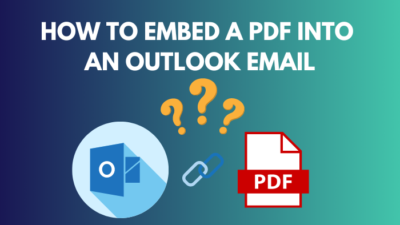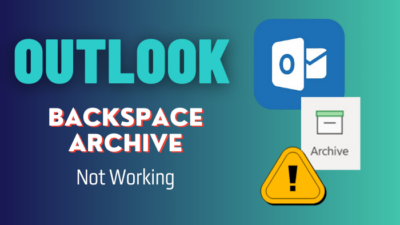Microsoft SharePoint is a well-known system for storing files, documents, and other types of data. You can use SharePoint to construct sites and store data for your SharePoint sites. But is using SharePoint as a database the best approach?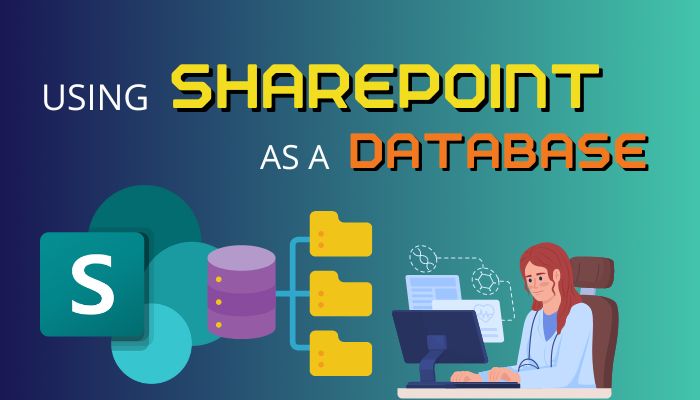
In this essay, I will thoroughly cover many scenarios involving the use of SharePoint as a database. So let’s get started.
To be honest, SharePoint is not designed to be a database. Yes, there are features that look and work like databases, but they are used to manage your documents. There are numerous reputable database systems that may be integrated into SharePoint.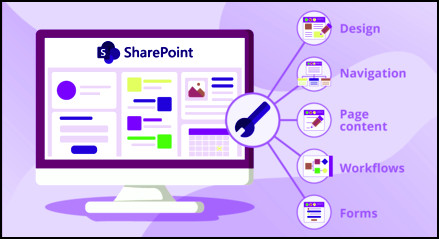
So, what exactly is SharePoint? The answer is that Microsoft developed SharePoint as a web-based platform for collaboration and document management. Furthermore, SharePoint is a robust platform that enables organizations to store, organize, share, and collaborate on data and information.
Microsoft Sharepoint is more than simply a data storage solution for Teams. It has far more possibilities and workarounds than just storing. SharePoint can handle the data of Teams and can also be used for file sharing.
So, in terms of the database, if you are familiar with traditional database systems such as MySQL or any other, Sharepoint lists appear to be database tables with columns and various data types at first glance.
Legitimate database programs grant DBA(doing business as) permissions to install new schema; however, this is not always required, since SharePoint lacks the DBA feature. MS SharePoint provides a well-balanced interface for using SB for data management.
That being said, it may seem like SharePoint is a valid option to utilize as a Database, and that’s true from a certain length. The point is the system is just straightforward but raises issues over time.
Because of the simplicity of the SharePoint database, you will lose the ability to use standard database apps while using SP as your database. When you need to keep a database on a regular basis, getting the appropriate one is essential.
Let’s look at some of the reasons why I recommend using genuine database software for your data storage rather of using SharePoint as a database. The first argument is that SharePoint lacks sufficient data collection features.
Furthermore, it does not work with complex data relationships that interact with one another. When there is only limited data I want to gather from a very narrow targeted audience, I use SB as a database for my SharePoint site.
Otherwise, I use MySQL or MongoDB as a database because of their extensive features and control.
While SharePoint is well-known for its many features, it has some limitations as a database solution, like SharePoint stores its data with column and rows, and there are times when you can’t edit the columns in SharePoint. The following are some drawbacks of utilizing SharePoint as a database.
Limited Scalability
SharePoint has a limited capacity for storing vast amounts of data, and its speed suffers as data accumulates. SharePoint is intended for document management, and its architecture is not meant to handle massive amounts of data.
As I mentioned in the preceding paragraph, there is a storage problem. When the amount of data is large and complex, I must use the original database system to store it.
Limited support for complex data relationships
Complex data linkages, such as many-to-many relationships, are not supported by SharePoint. This makes creating complicated queries and performing advanced data analysis difficult.
Limited reporting capabilities
SharePoint’s reporting features are minimal, and hence is unsuitable for extensive reporting requirements. SharePoint does not support the creation of custom reports, which might be a big disadvantage for firms that demand complex reporting.
Limited control over data
SharePoint has limited data control and does not provide complex data management features such as data versioning, transaction support, and referential integrity. This can be a difficulty for your firms that demand strong data control.
Limited integration with other systems
SharePoint does not connect well with other systems and necessitates extensive customization in order to operate with external databases and applications. This can make using SharePoint as part of a larger technology ecosystem problematic.
While SharePoint provides numerous advantages as a document management and collaboration platform, it has significant limitations as a database solution.
Businesses that seek a dependable yet scalable database solution should consider employing a specialized database management system rather than SharePoint.
SharePoint is a robust collaboration tool that allows users to save, organize, and share data. The ability to create custom lists, which may be used to build databases for handling structured data, is one of its important features.
The list feature in SharePoint allows you to specify fields and metadata for your data, create relationships across lists, and construct views that allow you to filter, sort, and group your data.
A few critical steps must be taken in order to create a database in SharePoint. Creating a new list, modifying the fields, adding data, defining views, setting permissions, and testing and tweaking your database as needed are all part of this process.
Following these steps will allow you to create a comprehensive and effective database in SharePoint that suits your individual requirements.
If you are a regular Microsoft user, you have another choice for database creation in the form of Power Apps. It is compatible with Sharepoint and other Microsoft products.
It is used by many developers and organizations to produce a variety of solutions. Likewise, it can also be used to develop database apps within the SharePoint list. Other database solutions exist whose sole purpose is data storage; here are some examples.
Oracle Database: Oracle is one of the most popular relational database management systems. It is known for its high performance, scalability, and security features. Oracle is commonly used for large enterprise applications and has a wide range of features including support for SQL, PL/SQL, and Java.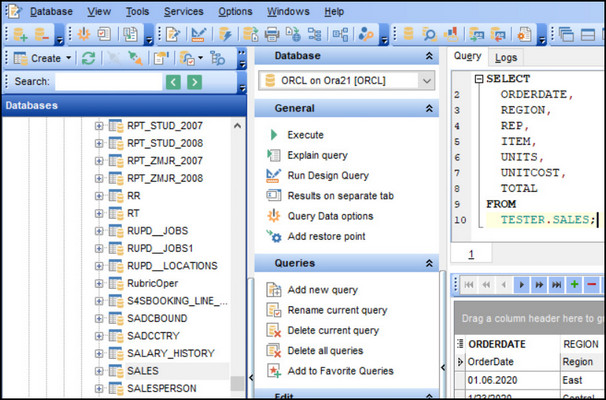
MySQL: MySQL is an open-source relational database management system that is widely used for web applications. It is known for its ease of use, scalability, and speed. MySQL is particularly popular with small to medium-sized businesses and has a strong community of developers.
Microsoft SQL Server: Microsoft SQL Server is a relational database management system that is commonly used in enterprise applications.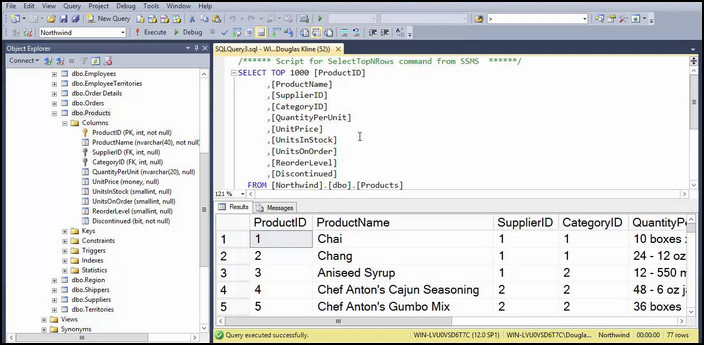
It is known for its ease of use, scalability, and support for SQL and other programming languages. SQL Server also includes a range of features for business intelligence, analytics, and reporting.
PostgreSQL: PostgreSQL is an open-source relational database management system that is known for its flexibility, scalability, and reliability. It is commonly used for web applications and has strong support for SQL and other programming languages.
MongoDB: MongoDB is a NoSQL database management system that is designed for handling large volumes of unstructured data. It is known for its flexibility, scalability, and ease of use. MongoDB is commonly used for web applications and has a strong community of developers.
FAQs
What database does SharePoint use?
Microsoft SharePoint employs MS SQL Server as a database management structure. However, SharePoint’s purpose and design are not to function as a database.
How to use SharePoint as a data source?
Select Data Connections from the Tools menu. Click Add within the Data Connections dialog box. Select Create a new connection, then Submit data, and then Next to the Data Connection Wizard. Choose To a document library on a SharePoint site beneath How do you want to submit your data, and then click Next.
Can SharePoint pull data from SQL Server?
Create a query that pulls information from a SQL database table that appends them to a SharePoint list. Select the SQL database table by clicking the Query Design button within the CREATE tab. To attach data to the SharePoint list, click the Attach button on the ribbon DESIGN tab.
Wrap-Ups
Using Microsoft Sharepoint as a database is not a bad idea, but you must grasp its limitations and usability. When you only need to store a little quantity of data that is not sophisticated, using the SP as a database is advantageous due to its simple user interface.
However, when the data volume is large and there is a mix of complex data, it is best to use a true database system.
